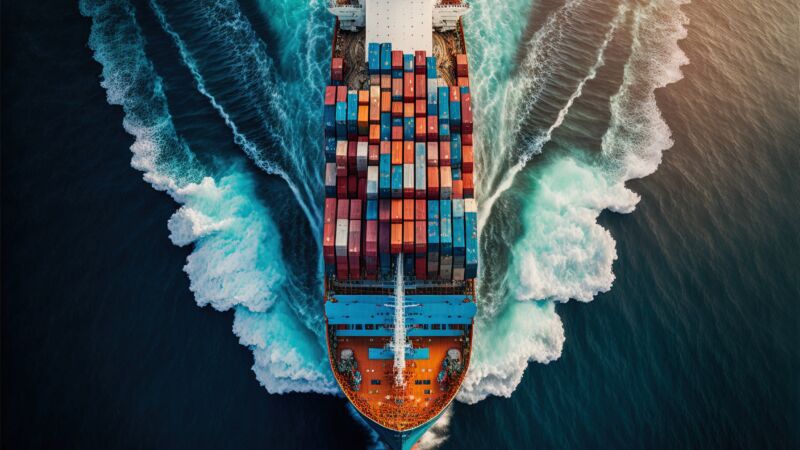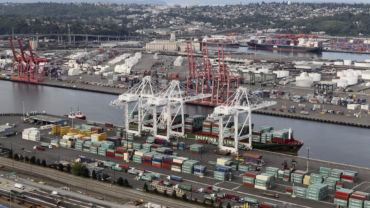The impact of the US government defaulting on its debt obligations is likely to be massive and far-reaching, and even the best-case scenarios are not good
In the 63 years since the U.S. Congress first enacted the debt limit, the United States has acted 78 times to raise the debt ceiling. However distant the possibility that the U.S. may willingly default, the pandemic era has taught organizations the importance of contingency planning and being able to adapt to extreme scenarios. Thus, it’s worth examining the implications of a possible U.S. default on global trade in more detail to better understand what challenges would be faced by international corporations, their supply chains, and governments.
Option 1: Non-technical default
The U.S. Treasury has a couple different options if the “extraordinary measures” which are forestalling the crisis reach their breaking point. The Secretary of the Treasury could make the choice to continue paying bond holders, prioritizing them in order to avoid a technical default. Such an action would avoid the common meaning of default, as the U.S. would continue to fulfil its obligations to its lenders. This would also give the government cover to avoid the greatest harms to international trade and the currency regime, but it is unlikely to escape without significant harm to its standing and reputation.
While technically avoiding default, reaching this point would expectedly lead to downgrades in the country’s credit rating and increased interest rates more broadly, as was seen in the near default of 2011. The more significant impact this time would be to the domestic economy. Prioritizing bonds would result in substantial domestic spending cuts as the Treasury would divert its already insufficient cashflow to repay lenders. Payments to state programs, healthcare, Social Security, and military spending would thus see a larger contraction in funds than they would be otherwise. The U.S. would almost certainly enter a recession with high unemployment.
The U.S. plunging into recession would cause other fragile economies to enter into recession as well, pulling down global economic demand. However, this scenario would more resemble a traditional global recession, the type of which has been navigated and documented previously. While having its own unique challenges, non-technical default would be more familiar to organizations and businesses than Option 2.
Option 2: Classic default
In this circumstance, domestic spending has been given priority over bond holders and the U.S. government defaults on its debt. Immediately, the U.S. dollar experiences a sharp decline in value relative to other currencies, as last-minute hopes of a political compromise are dashed. Subsequently, import prices skyrocket and inflation could spike rapidly. Investors will then begin to sell off U.S. Treasuries at a high volume, likely at a loss that will hamper global access to liquid capital.
The U.S. plunging into recession would cause other fragile economies to enter into recession as well, pulling down global economic demand.
With the loss of the supposedly most safe and stable asset, financial institutions’ balance sheets would become fragile in a way that they haven’t since the Global Financial Crisis of 2007-’08. The Federal Reserve would need to immediately announce emergency measures to support financial markets and prevent a total collapse of the financial system.
This then would likely be followed by other countries reducing their dependence on the dollar as the international reserve and trade currency. The U.S. has greatly benefited from its place as the standard currency for international finances, trade, and economic stability. A default on its debt from something as innocuous as failing to raise the debt ceiling will end this status. Other countries, namely China but also potentially the European Union, India, and Japan will try to push their currencies as the new standard-bearer, but this process will be messy, and it will take time.
Meanwhile, the rapid exchange of currencies will cause chaotic fluctuations in exchange rates and make global trade immediately more difficult. Combined with the crisis in the international financial system that the Federal Reserve will be struggling to hold together, a liquidity crisis becomes possible, which would strangle global trade in the short term. Ships will be stuck in ports as companies and governments alike struggle to raise the funds to free them while valuable commodities lie frozen in the supply line as buyers work to stabilize their balance sheets and avoid illiquidity. The resulting seesawing of prices will only make trade more difficult and more expensive.
Bond holders will not be the only ones seeing their cash flows stop. State spending and major social programs in the U.S. will also see funds frozen, though to a lesser extent than a non-technical default would see. The combination of fiscal cuts combined with a financial crisis will still plunge the world’s largest economy into recession.
It’s difficult to do more than hypothesize what global trade would look like in a post-default world, but it would most likely be dramatically more costly and less accessible.
The price of oil and other commodities will experience significant fluctuations. Global inflation will probably reignite as the benefits of a sole global reserve currency are lost, and the additional costs of more expensive trade will be felt broadly. Countries will seek to reduce their reliance on the U.S. in as many ways as possible, including creating new trading blocs which would become more isolated from one another as the global economy becomes more splintered. The resulting barriers to trade and global supply chains will likewise make global trade more difficult and, again, more expensive.
The long-term impacts
In the medium- to long-term there would be a global recession and higher costs of doing business for everyone involved. Without a dominant global trade regime, trading blocs will vie for supremacy, perhaps erecting barriers to trade such as requiring business to be done solely in the bloc’s currency of choice, be it the euro or yuan. Money will be tight, and importers and exporters will face delays or maybe even find their jobs impossible for long stretches of time until the new global market dynamic has a chance to emerge.
Despite rising labor costs in countries such as China, the economic disruption may further hamper movement of manufacturing to lower-cost developing countries, further pushing up costs and hampering global economic growth. Yet, out of everyone impacted, the U.S. will be the one left the most scarred. Thrown into a deep recession, its financial system and credit facing the greatest challenge since not 2008, but rather 1929, the prosperous United States at the center of a global economy will become a memory.
It’s difficult to do more than hypothesize what global trade would look like in a post-default world, but it would most likely be dramatically more costly and less accessible. The good news is that default remains unlikely. As stated previously, the United States has always managed to raise the debt ceiling before reaching the default state. After all, countries tend to avoid courting economic collapse simply to score domestic political points. Given events such as Brexit however and the failure of some countries to properly respond to global crises like the pandemic, such cataclysmic events cannot be ruled out entirely. Companies and governments alike should be prepared for the previously unthinkable to possibly happen.







